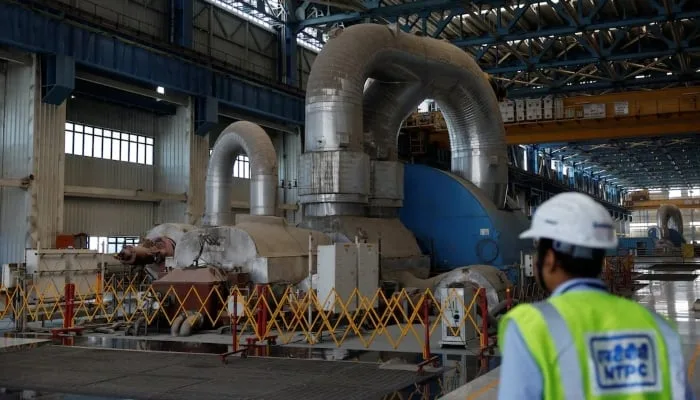As April marks the onset of sweltering heat across western India, Solapur residents brace for months of water shortages. What was once a two-day wait for tap water a decade ago has now stretched into week-long droughts, as climate change and industrial demand dry up precious resources.
The 2017 launch of a 1,320-megawatt coal-fired power plant by state-controlled NTPC intensified the crisis. The plant, which serves the district with much-needed electricity, also competes with locals for water drawn from a distant reservoir nearly 120km away. Once considered a lifeline for both households and agriculture, the shared resource has become a point of contention.
India, home to 17% of the world’s population but just 4% of its freshwater, finds itself trapped in a dangerous trade-off: choosing between industrial power and human need. A confidential document from the power ministry reviewed by Reuters reveals that 37 of 44 proposed coal plants are planned in water-stressed regions, risking wider conflicts over dwindling supplies.
NTPC, which draws 98.5% of its operational water from such areas, told Reuters it is striving to conserve water through treatment and reuse, but it did not clarify plans for expansion. With India allocating $80 billion to coal power by 2031, the future appears grim for water-stressed communities like Solapur.
The Political and Economic Catch-22
Solapur’s troubles are part of a broader national dilemma. India’s push for thermal power—particularly in dry regions—stems largely from political pressure to meet rising energy demands. Former federal power minister Sushilkumar Shinde, who approved the Solapur plant in 2008, insists the project brought progress, employment, and compensation to local farmers.
Read: “We’ve Been Kidnapped by Israeli Forces in International Waters” Greta Thunberg
“There was nothing in Solapur,” said Shinde. “NTPC brought development.”
Yet residents like Rajani Thoke tell a different story. “When water comes, all I do is fill buckets, wash, and save. There’s no time for anything else,” said the mother of two. Meanwhile, Solapur official Sachin Ombase admitted that infrastructure development has not kept pace with population growth.
Energy experts point to India’s complex land laws and the drive to find areas with fewer legal hurdles, often at the cost of long-term water availability. Rudrodip Majumdar, an energy professor, noted, “They prioritize easy land acquisition—even if water is 100 kilometers away.”
And despite Delhi’s initial pivot to solar and hydro after COVID, the government has resumed focus on coal to meet the surging power needs of data centers and industries. The trade-off is stark: coal is plentiful, but water is not.
Chandrapur and the Nationwide Impact
The Solapur plant is not alone in its thirst. The Chandrapur Super Thermal Power Station, a 2,920MW coal plant located 500km northeast of Solapur, often shuts units when water is scarce. It is now considering adding 800MW more capacity despite not having secured a water source.
Data from the Centre for Science and Environment shows Indian thermal stations consume nearly twice as much water as global averages. Since 2014, water shortages have cost the country 60.33 billion units in lost electricity—equal to 19 days of coal-power supply.
The government’s reluctance to decommission outdated, inefficient power units has only worsened the strain. Chandrapur resident Anjali, who depends on a tap outside the power station for drinking water, summed up the desperation: “We’re poor. We make do with whatever we can get.”
A forthcoming groundwater survey shows Solapur’s irrigation demand exceeds supply by a third. Farmers like Dharmes Waghmore hesitate to invest in bore wells, fearing they may run dry.
Local official Kuladeep Jangam admits the challenge. “The lack of water neutralizes all other pull factors,” he said.
As India’s thirst for power rises, its thirst for water may become unquenchable.
Follow us on Facebook and Instagram
